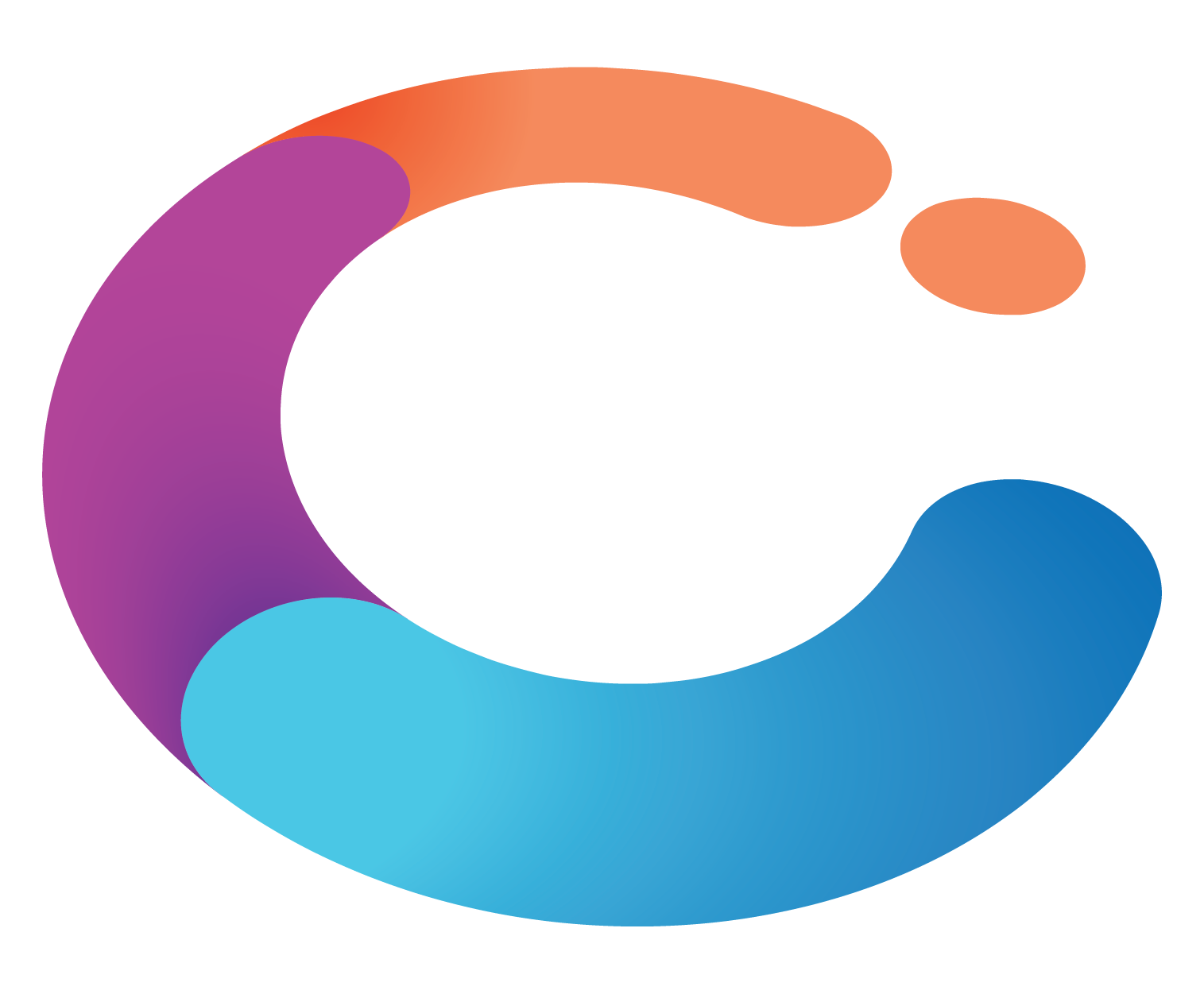How to Write an Effective Job Duties Description: A Step-by-Step Guide
To create an effective job duties description, it is essential to:
Engage
|
Hire
|
Develop
|
Assure
|
|
Deeply understand your organisation with science-backed analytics on your culture, team design, and engagement. |
Automatically match to candidates who are a great fit for your team culture and who are intrinsically motivated to succeed. |
Back your onboarding, compliance and skill development with industry-leading credentialling, competency and capability expertise.
|
Reimagine skills assessment and certification with dedicated tools designed to elevate your competency frameworks.
|
.png?width=383&height=200&name=team%20(1).png)
14 min read
 Compono
Apr 4, 2025 11:58:19 AM
Compono
Apr 4, 2025 11:58:19 AM

Job descriptions serve as formal documents that delineate the essential functions, responsibilities, and qualifications for specific positions. They play a crucial role in recruitment, employee engagement, and organisational effectiveness. Clear and regularly updated job descriptions not only attract suitable candidates but also significantly enhance employee retention and satisfaction.
Research indicates that when job roles are well-defined, organisations experience an 84% increase in retention rates.
In modern hiring, job descriptions have emerged as vital instruments that shape not only recruitment strategies, but also employee engagement and retention. These formal documents extend beyond mere listings of duties; they clarify expectations, align roles with organisational goals, and foster a sense of belonging among employees.
As companies navigate an evolving workforce marked by changing expectations and diverse talent pools, the significance of well-crafted job descriptions cannot be overstated. This article explores the essential components of effective job descriptions, best practices for inclusivity, common pitfalls to avoid, and the role of technology in optimising these critical HR tools.
By understanding and implementing these strategies, organisations can enhance their hiring processes, attract the right candidates, and ultimately drive business success.
A job description is a formal document that delineates the essential functions, responsibilities, and qualifications necessary for a specific position within an organisation. It serves as a fundamental tool for HR professionals, providing clarity on expectations and aligning employee responsibilities with the overarching objectives of the company.
Typically, job descriptions encompass several key components:
This comprehensive framework ensures that both employers and applicants have a clear understanding of the job description and the expectations of the position.
In contemporary HR practices, the importance of job descriptions cannot be overstated. They not only attract suitable candidates through effective recruitment but also play a crucial role in performance management and employee development. Regular updates to job roles are essential to reflect changing skills and market demands, ensuring that organisations remain competitive and responsive to industry trends.
Recent statistics reveal that only 30% of employees report high engagement levels, underscoring the need for effective job descriptions that foster clarity and alignment within teams. The economic consequences of disengagement are significant, as illustrated by the case study titled "Current State of Employee Engagement," which indicates that disengagement costs the global economy substantially. Companies aim to combat low engagement by providing tools and strategies that foster a more engaged workforce, recognising that higher engagement correlates with better business performance and lower turnover.
Additionally, 33% of employees suggest that flexibility is the most important measure implemented by their employer to promote mental health, highlighting the evolving expectations of job positions in today’s workforce.
In support of this, Compono's integrated HR solutions enhance employee engagement by leveraging personality assessments for strategic job matching and talent profiling, ensuring that employees are well-suited for their roles.
Expert opinions emphasise that a well-crafted job description is an essential HR tool that improves organisational effectiveness. There is immense and strategic value in providing a job description, which aids in identifying and attracting diverse talent.
As organisations strive to optimise their hiring processes, having a clear job description in effective job listings has become increasingly critical. Enhancing job listings with a compelling job description can increase application rates and attract suitable talent, making it vital for companies to create job outlines that resonate with prospective applicants. Organisations that utilise job listings effectively report greater application rates and improved alignment between applicants and organisational culture.
In this context, a job description is not merely an administrative document; it is a strategic asset that drives engagement, performance, and overall business success.
A description about jobs plays a crucial role in the recruitment process, providing potential candidates with a comprehensive understanding of the position and its requirements. This clarity not only attracts suitable applicants who align with the organisation's needs and culture but also lays the groundwork for effective employee engagement. Well-defined job outlines establish clear expectations and performance benchmarks, essential for fostering a motivated workforce.
When employees have a solid grasp of their roles and responsibilities, they are more likely to feel valued and engaged, leading to increased job satisfaction and retention. Research shows that organisations with well-defined roles experience an impressive 84% increase in employee retention rates. This statistic underscores the importance of job outlines in cultivating a positive work environment.
Moreover, the impact of job roles extends beyond retention; they are vital for recruitment success. Companies that utilise clear and detailed job outlines report higher success rates in attracting the right talent. For instance, a recent case study highlighted how a company improved its recruitment outcomes by implementing organised job outlines, resulting in a more efficient hiring process and a better cultural fit among new employees.
Joanna Plohl, Group HR Manager at Clarendon Homes, remarked, 'This enables us to look beyond our industry to find quality individuals who possess transferable skills and fit right in.'
Additionally, expert insights suggest that a clear description about jobs correlates with enhanced employee engagement. A significant 53% of Americans report unhappiness at work, often due to unclear job expectations. By providing clarity, organisations can address this issue, fostering a more engaged and productive workforce.
Furthermore, Compono's innovative HR technology solutions leverage predictive insights to optimise candidate matching and streamline job posting management, ensuring that expectations are consistently communicated across the organisation.
Ultimately, the significance of job outlines cannot be overstated; they serve as a foundational element in aligning talent with organisational objectives and ensuring long-term success. As the work environment evolves, addressing the challenges of ambiguous expectations through well-prepared job outlines becomes increasingly crucial, especially in a landscape where the shift from conventional CVs to psychometric assessments is reshaping hiring strategies.
An effective job description is crucial for attracting the right talent and typically includes several key components:
By integrating these elements, HR specialists can develop a job description that is not only clear and informative but also attractive to prospective applicants. Building on this, Compono's predictive insights assist in matching candidates with roles that align with their skills and personality, ensuring a better fit and higher chances of success. Additionally, Compono enables HR managers to build comprehensive talent profiles, including validated work personality assessments, which further enhance the matching process.
Regular audits and updates of job roles are essential to ensure they remain relevant and precise, reflecting the evolving needs of the organisation.
Current trends suggest that inclusive language in job postings can significantly influence diversity in hiring. For instance, research shows that the use of gender-coded language can deter female applicants, with men applying 13% more often than women for jobs due to the language used in postings. Instruments such as Compono's personality evaluations can assist HR leaders in creating job outlines that encourage inclusivity and draw a broader spectrum of applicants.
As HR leaders increasingly view their role as strategic rather than merely administrative—77% of mid-sized companies now recognise HR's strategic importance—creating a comprehensive job description becomes vital for aligning talent acquisition with organisational goals. Moreover, the launch of AI-driven solutions can assist users in crafting enhanced job postings that appeal to suitable applicants, further improving the relevance of the content.
Compono also supports learning and development management, ensuring that organisations can nurture their talent effectively while simplifying the hiring process.

To create inclusive and clear job descriptions, HR professionals should adhere to several best practices, leveraging Compono's predictive insights to enhance their hiring processes:
Use Gender-Neutral Language: Employ terms that are free from gender bias, ensuring the language is inviting to all applicants. Research indicates that using gender-neutral wording can increase responses by up to 42%, significantly broadening the applicant pool.
Be Specific: Clearly define the skills and qualifications necessary for the position. Avoid vague language that can lead to misunderstandings, as specificity helps applicants better assess their suitability for the position. Compono's predictive insights can aid in identifying the most relevant traits that align with successful individuals in similar roles, utilising data analytics.
Highlight Company Culture: Offer insights into the organisation’s values and culture. This transparency enables individuals to assess their alignment with the company, fostering a sense of belonging from the outset. By utilising Compono's tools, HR professionals can better articulate their company culture based on data-driven insights, ensuring that applicants understand the environment they may join.
Encourage Diverse Applicants: Include statements that actively invite individuals from diverse backgrounds to apply. This not only demonstrates the organisation’s commitment to inclusivity but also enriches the talent pool with varied perspectives. Compono's technology can assist assessing diverse talent pools effectively and fairly, removing bias and supporting diversity of thought.
Keep It Concise: Utilise clear and straightforward language, steering clear of jargon and overly complex sentences. Conciseness enhances readability and ensures that essential information is easily digestible.
Consider Workplace Safety: It’s crucial to create an environment where everyone feels safe. Statistics indicate that 34% of women are bullied at work, emphasising the need for job outlines that foster inclusivity and respect.
Applying these methods can greatly improve the impact of job postings, drawing a varied pool of applicants and fostering an inclusive recruitment process. For instance, a case study on job posting timeliness revealed that application submissions peak on Mondays and Tuesdays, suggesting that posting job listings early on Monday mornings can boost visibility and attract more applicants. By aligning job specifications with these best practices and utilising Compono's predictive insights, which streamline the hiring process by matching applicants based on their potential for success, organisations can not only enhance their hiring outcomes but also contribute to a more equitable workplace.
Additionally, Compono's learning and development management solutions can support new hires in their growth, ensuring they are set up for success from day one.

When crafting job descriptions, HR professionals must be vigilant about common pitfalls that can significantly undermine their effectiveness.
Using Buzzwords: Clichéd phrases such as 'rock star' or 'ninja' can detract from the professionalism of the description, making it less attractive to serious applicants. Avoiding unnecessary jargon is crucial to maintain clarity.
Being Vague: A lack of specific details about the position can lead to misunderstandings and attract inappropriate applicants. Clear expectations are essential for creating a description that aligns with the right talent.
Overloading with Requirements: Listing excessive qualifications can discourage even the most skilled individuals from applying. It is crucial to focus on the essentials that truly matter for the role and avoid inflated requirements.
Neglecting Inclusivity: The use of non-inclusive language can alienate potential candidates from diverse backgrounds. Research indicates that masculine language in job postings can deter women from applying, with LinkedIn reporting that men apply 13% more often than women after viewing a position. Adopting gender-neutral language can help attract a more diverse applicant pool.
Ignoring Updates: Job outlines should be regularly reviewed and updated to reflect changes in the role or organisational needs. Statistics indicate that 42% of employers have had to revise or rewrite their job postings because they were attracting unqualified candidates. Indeed.com states that 65% of employers had to update a job listing less than a year after it was posted, highlighting the importance of keeping them current.
By avoiding these pitfalls, HR professionals can craft job postings that provide a clear description of jobs, making them engaging and effective in attracting the right talent. Additionally, it is beneficial to leverage the strengths of The Advisor personality types within HR teams. Encouraging The Advisors to take on consultant or mentor roles can enhance collaboration and problem-solving.
Their natural inclination for thorough research and appreciation for diverse perspectives can lead to more inclusive and effective job descriptions. For instance, a case study titled "Don'ts for Crafting Inclusive Job Descriptions" emphasises avoiding unnecessary jargon and inflated requirements, which can discourage qualified individuals from applying. This approach promotes a more inclusive hiring process and enhances the overall effectiveness of recruitment efforts.
Additionally, posting job listings early Monday morning can help boost visibility and attract more candidates.
As organisations evolve, the necessity for updated job descriptions becomes paramount. Regularly revising these outlines is crucial to ensure that job descriptions accurately reflect the current responsibilities and expectations of each role. This adaptability can be achieved through several key practices:
Regular Reviews: Establish a schedule for periodic assessments of job roles to evaluate their relevance and accuracy. This proactive strategy aids in identifying any inconsistencies between job descriptions and actual responsibilities, ensuring alignment with organisational goals.
Involving Stakeholders: Engage employees and managers in the review process to gather valuable insights regarding any changes in responsibilities or expectations. This collaborative effort fosters a sense of ownership and clarity among team members, enhancing team dynamics and engagement.
Aligning with Organisational Goals: Ensure that job outlines are in sync with the organisation's strategic objectives and culture. This alignment is crucial, especially during times of change, as it reflects any shifts in focus or priorities that may impact job descriptions. Utilising tools like Compono's Work Personality assessment can help identify dominant work types within teams, allowing for more tailored job roles that enhance performance. The assessment process includes a brief, two-minute evaluation that offers insights into personal work preferences and possible blind spots, enabling HR managers to develop job roles that align with team strengths.
Communicating Changes: Clearly communicate any updates to employees to ensure they fully understand their roles and responsibilities. Effective communication minimises confusion and reinforces alignment with organisational goals, fostering an environment of empathetic leadership.
By maintaining flexible job roles, organisations can provide better job descriptions, enabling them to navigate changes more effectively and ensuring that employees remain aligned with the company's objectives. This practice not only enhances job satisfaction but also mitigates frustration and low morale, which often arise from outdated or inaccurate job descriptions. Research indicates that a significant percentage of mid-sized companies lack integrated HR systems and clarity on people and culture, underscoring the market need for solutions like Compono that facilitate these updates.
In fact, poor job satisfaction stemming from incorrect job descriptions leads to frustration and low morale among employees. Furthermore, the retrenchment rate decreased to 1.2% in May 2023, emphasising the significance of adjusting job roles in a changing job market. Regular evaluations of job roles can improve job descriptions, leading to enhanced employee engagement and performance, ultimately contributing to the overall success of the organisation.
This highlights the importance of adaptability in recruitment and the necessity of maintaining relevant job roles, especially in utilising diverse perspectives and collaboration within teams. Additionally, when collaborating with the The Advisor personality type, it is essential to promote flexibility in their problem-solving approach and support their appreciation for diverse perspectives, ensuring that their need for thorough research is respected.

Technology is pivotal in creating a comprehensive description of jobs, enabling HR professionals to streamline their processes and enhance recruitment outcomes. Compono's innovative HR technology solutions play a crucial role in this transformation, offering integrated tools that help workforce management and drive employee engagement.
Key tools and software that can be leveraged include:
In fact, 49% of organisations use job analysis questionnaires as a job analysis method, highlighting the importance of structured approaches in job role management. Incorporating these technologies into job management not only enhances efficiency and accuracy but also provides clearer job descriptions, significantly improving the overall effectiveness of attracting the right talent. As organisations navigate the evolving landscape of work, leveraging Compono's tools becomes essential for aligning talent acquisition strategies with business objectives.
Furthermore, with a persistent skills gap in the tech sector, effective job management is crucial for attracting qualified candidates and addressing current hiring challenges. The case study titled 'Why It Matters Now' illustrates how companies encounter challenges in making effective personnel decisions due to outdated models and subjective biases, underscoring the need for a modern approach to job management.
The future of job descriptions is poised to be influenced by several transformative trends and innovations:
AI and Automation: The incorporation of artificial intelligence in the creation and management of job postings is set to revolutionise the hiring process. Companies utilise predictive insights through tools like matching algorithms to align individuals with positions that fit their skills and potential, streamlining the entire process for HR teams. AI can quickly assess job market trends and suggest descriptions that connect with prospective applicants, ensuring that job postings are not only pertinent but also refined for attracting the right talent.
A notable shift towards skills-based descriptions is emerging, emphasising the competencies necessary for the role rather than traditional qualifications. This approach broadens the applicant pool, allowing organisations to consider a diverse range of individuals, thereby enhancing job descriptions by including those who may possess transferable skills. As Joanna Plohl, Group HR Manager at Clarendon Homes, states, "This enables us to look beyond our industry to find quality candidates who have transferable skills and fit right in." Compono's science-backed insights further empower HR leaders to create detailed job descriptions, enabling them to identify and articulate these competencies effectively while utilising tools that help define and assess required skills.
Dynamic Job Listings: Job descriptions are evolving into dynamic documents that can be easily updated to reflect changes in responsibilities and organisational needs. This adaptability is crucial for organisations aiming to keep pace with the fast-evolving work environment, ensuring that job descriptions remain relevant and aligned with business objectives. Companies are planning to invest in on-the-job training and automation as key strategies for workforce development through 2027, highlighting the importance of comprehensive job descriptions. Compono's solutions aid this evolution by offering tools that promote continuous learning and development management.
Emphasis on Diversity and Inclusion: Future job postings will increasingly feature descriptions that prioritise inclusive language and practices, ensuring that organisations attract a diverse pool of candidates. Research indicates that job descriptions utilising gender-neutral language can enhance responses by up to 42%, emphasising the significance of inclusivity in recruitment strategies. Compono's predictive insights can assist organisations in assessing candidates upfront on culture, job and personality match - fostering a more inclusive hiring process.
Furthermore, with minimum wages expected to rise in 20 US states in 2025, companies may need to update job descriptions and salary ranges, making it essential to align these documents with current market conditions.
By embracing these trends and leveraging Compono's innovative HR technology, including its focus on psychometrics in recruitment, organisations can enhance their recruitment strategies, ensuring that job descriptions remain relevant and effective in attracting top talent.

Crafting effective job descriptions is not merely a best practice; it is a strategic imperative for organisations aiming to thrive in today’s competitive job market. By clearly defining roles and responsibilities, job descriptions serve as essential tools for attracting suitable candidates, fostering employee engagement, and enhancing retention. The integration of key components, such as specific qualifications, company culture insights, and a focus on inclusivity, significantly elevates the recruitment process, ensuring alignment between organisational goals and employee expectations.
Moreover, leveraging technology in job description management streamlines processes and mitigates biases, allowing HR professionals to craft descriptions that resonate with a diverse candidate pool. The future of job descriptions leans towards dynamic, skills-based frameworks that adapt to the changing landscape of work, emphasising the need for organisations to remain agile and responsive.
As the workforce evolves, prioritising clarity and inclusivity in job descriptions becomes crucial for fostering a positive work environment and driving organisational success. By embracing these practices, companies can attract the right talent while cultivating a culture of engagement and belonging, ultimately enhancing their overall performance and sustainability in the marketplace.
What is a job description?
A job description is a formal document that outlines the essential functions, responsibilities, and qualifications required for a specific position within an organisation. It helps clarify expectations and aligns employee responsibilities with the company's objectives.
What key components are typically included in a job description?
A job description usually includes the job title, purpose, duties, required qualifications, and preferred qualifications.
Why are job descriptions important in contemporary HR practices?
Job descriptions are crucial for attracting suitable candidates, managing performance, and fostering employee development. They need regular updates to reflect changing skills and market demands, ensuring organisations stay competitive.
How do job descriptions impact employee engagement?
Effective job descriptions can enhance clarity and alignment within teams, which is vital for employee engagement. Poor engagement can significantly impact the economy, highlighting the need for clear job expectations.
What do statistics say about employee engagement related to job descriptions?
Only 30% of employees report high engagement levels, and organisations with well-defined roles see an 84% increase in employee retention rates. This indicates that clear job outlines are essential for fostering a motivated workforce.
How can job descriptions improve recruitment success?
Companies that use clear and detailed job outlines report higher success rates in attracting the right talent, leading to more efficient hiring processes and better cultural fits among new employees.
How does Compono's HR technology enhance the job description process?
Compono's HR solutions leverage personality assessments for strategic job matching and streamline job posting management, ensuring that expectations are consistently communicated across the organisation.
What is the overall significance of job descriptions in an organisation?
Job descriptions are strategic assets that drive engagement, performance, and overall business success. They are foundational in aligning talent with organisational objectives and addressing challenges related to ambiguous expectations.

To create an effective job duties description, it is essential to:

The article outlines best practices for LinkedIn job advertising, emphasising strategies that enhance HR success by leveraging the platform's...

Best practices for LinkedIn job ads underscore the significance of clear job titles, engaging summaries, and targeted audience strategies to...

To effectively post job ads on LinkedIn, HR managers should implement a structured process that encompasses:

The article focuses on the essential functions and concepts within Human Resources (HR) critical for fostering a productive work environment. It...

The article emphasizes best practices for crafting effective interview questions, highlighting their critical role in assessing candidates'...